Sports
Track Gears up for NCAA West Prelims in College Station
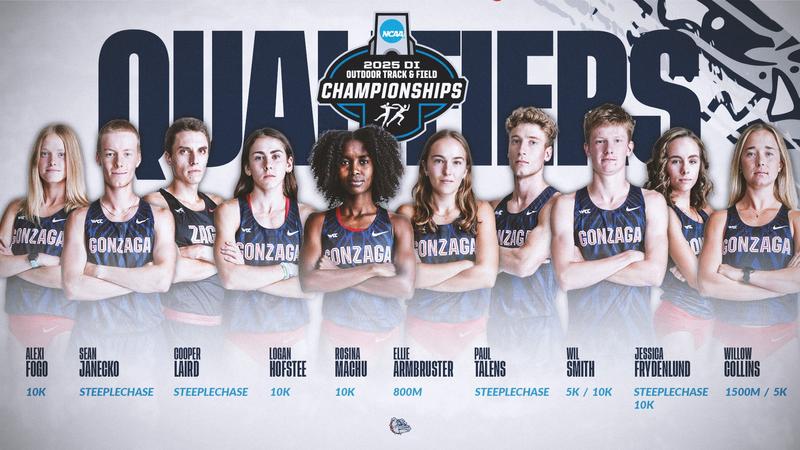
2025 NCAA WEST PRELIMINARY ROUNDS
WEDNESDAY, MAY 28 | E.B. CUSHING STADIUM | COLLEGE STATION, TEXAS
ESPN+
LIVE STREAM | LIVE RESULTS
7:10 p.m. PST | Men’s 10,000m Semifinal | Wil Smith
THURSDAY, MAY 29 | E.B. CUSHING STADIUM | COLLEGE STATION, TEXAS
ESPN+
LIVE STREAM | LIVE RESULTS
4:30 p.m. PST | Women’s 1500m First Round | Willow Collins
5:50 p.m. PST | Women’s 800m First Round | Ellie Armbruster
7:10 p.m. PST | Women’s 10,000m Semifinal | Rosina Machu, Logan Hofstee, Jessica Frydenlund, Alexi Fogo
FRIDAY, MAY 30 | E.B. CUSHING STADIUM | COLLEGE STATION, TEXAS
ESPN+
LIVE STREAM | LIVE RESULTS
3:40 p.m. PST | Men’s 3000m Steeplechase Quarterfinal | Cooper Laird, Sean Janecko, Paul Talens
6:10 p.m. PST | Men’s 5000m Semifinal | Wil Smith
SATURDAY, MAY 31 | E.B. CUSHING STADIUM | COLLEGE STATION, TEXAS
ESPN+
LIVE STREAM | LIVE RESULTS
3:15 p.m. PST | Women’s 1500m Quarterfinal* | Willow Collins
3:40 p.m. PST | Women’s 3000m Steeplechase Quarterfinal | Jessica Frydenlund
5:05 p.m. PST | Women’s 800m Quarterfinal* | Ellie Armbruster
6:10 p.m. PST | Women’s 5000m Semifinal | Willow Collins
*If athlete advances to the Quarterfinal round
COLLEGE STATION, Texas – Gonzaga men’s and women’s track will send a combined ten student-athletes, six women and four men, to race at the 2025 NCAA West Preliminary Round in College Station, Texas, May 28-31. The NCAA Division I Men’s and Women’s Track and Field and Cross Country Committee announced the West Region and East Region Preliminary Round participants Thursday morning.
This season, five Bulldogs secured repeat qualifying marks to the NCAA West Prelims, led by Cooper Laird’s (Steeplechase) fourth straight preliminary. Rosina Machu (10,000m) and Wil Smith (5000m/10,000m) will each make their third consecutive prelims appearance, and both Willow Collins (1500m/5000m) and Jessica Frydenlund (10,000m/Steeplechase) will race for the second straight season. New to the NCAA postseason this year are Sean Janecko (Steeplechase), Paul Talens (Steeplechase), Ellie Armbruster (800m), Logan Hofstee (10,000m), and Alexi Fogo (10,000m).
Three athletes (Smith, Frydenlund, Collins) will compete in multiple events for the second straight season, matching another combined program best. Armbruster will be the first 800-meter qualifier in GU history.
For each individual event contested at each of the Preliminary Round sites, the top 48 declared student-athletes will be accepted into the competition, with the top 12 in each advancing to the NCAA Outdoor National Championships in Eugene, Ore., June 11-14. The University of North Florida in Jacksonville, Fla., will host the East Preliminary and Texas A&M, in College Station, Texas, will host the West Preliminary.
As a program, Gonzaga’s ten qualified athletes and 12 events are each program records. For the Bulldog women, six qualifiers in eight events marks the fourth consecutive season with program highs. Head coach Jake Stewart‘s team qualified three athletes in 2022, four in 2023, and five in 2024 before this year’s six.
The Zag men will send four athletes to College Station, continuing their streak of at least three qualifiers that dates back to 2018. Three steeplechasers earned a spot in the First Rounds, matching a program high that was also set in 2018. Head coach Pat Tyson‘s team will send at least one athlete to the NCAA postseason for the 12th straight year.
THE ROAD TO NCAA OUTDOOR CHAMPIONSHIPS
Student-athletes with the top 12 times or marks and the best 12 relay teams at both the East and West Preliminary Rounds sites will qualify for the NCAA Division I Men’s and Women’s Outdoor Track and Field Championships held June 11-14 at Hayward Field in Eugene, Ore. It will be the 19th time the outdoor championships have been held in Eugene and the tenth time in the last 14 years.
In the 5,000m race, the field of 48 is split into two heats of 24 runners each. The top five from each will advance to the NCAA Outdoor Championships, as well as the top two times from those not within a top five within a heat. In the 10,000m, all runners compete at once with the top 12 finishers moving on. In the 3,000m Steeplechase, the competition is split into three heats of 16 runners, with the top three from each heat and the top three times from those not within a top three within a heat advancing to the NCAA Championships.
The first round of the 1500m at the NCAA West Prelims is broken into four heats, each with 12 runners. The top five from each heat will advance to the quarterfinals, as well as the top four times from those who are not inside a top five within a heat. From there, the top five from each Quarterfinal will advance to the NCAA Championships, as well as the top two times from those not within a top five within a heat.
The first round of the 800m is broken into six heats, each with eight runners. The top three from each heat will advance to the quarterfinals, as well as the next top six times. From there, three heats of eight competitors will race in the quarterfinal round, with the top three from each heat and the next best three times moving onto the semifinal round at the NCAA Championships.
-GoZags.com-
Sports
ECAC Announces 2025 Division I Women’s Volleyball All-ECAC and Major Awards

ECAC Announces 2025 Division I Women’s Volleyball All-ECAC and Major Awards
DANBURY, Conn. – The Eastern College Athletic Conference (ECAC) has announced its 2025 Division I Women’s Volleyball All-ECAC Teams and major awards.
Korrin Burns from Saint Francis University won Offensive Player of the Year. Jessie Golden of Brown University won Defensive Player of the Year. Yale’s Ava Poinsett won Rookie of the Year and Lauren Steinbrecher of James Madison University won Coach of the Year.

Korrin Burns – Saint Francis University, Outside Hitter

Jessie Golden – Brown University, Libero
Ava Poinsett – Yale University, Outside Hitter
Lauren Steinbrecher – James Madison University, Coach
ECAC Division I Women’s Volleyball All-ECAC First Team*
TaKenya Stafford – Coppin State, Rs-Sr., OH
Kiannisha Santiago – Rider University, Sr., OPP
Korrin Burns – Saint Francis University, Sr., OH
Kennedy Louisell – James Madison University, Jr., OH
Izadora Stedile – Hofstra University, Sr., OH
Alexandra Sappia – Saint Francis University, Rs-Sr., S
Jessie Golden – Brown University, Sr., L
ECAC Division I Women’s Volleyball All-ECAC Second Team
Kali Moore – Stony Brook University, Sr., OH
Arianna Ugolini – Bryant University, Sr., OH
Maya Walker – Fairfield University, Sr., MB
Ava Poinsett – Yale University, Fr., OH
Sydney Draper – Princeton University, Jr., S
Coco Figueroa – Coppin State, Jr., L
*additional due to ties in voting
ABOUT THE ECAC
The ECAC is an eighty-six year old intercollegiate athletics organization with roughly 200 member schools for traditional sports across all three NCAA Divisions – I, II and III – that exists to enhance the experience of student-athletes participating in NCAA sports, and provide great value for universities, by sponsoring championships, leagues, bowl games, tournaments and other competitions throughout the country. The ECAC also hosts a comprehensive esports program, with over 300 schools, 4,000 teams and 10,000-plus participants in twenty-four different games titles.
STAY CONNECTED
Stay updated on the latest news, championships and more by connecting with the ECAC on Facebook (ECACSports), Twitter (@ECACSports) and Instagram (@ECACSports).
Sports
Men’s and women’s track and field sets sight on nationals, again
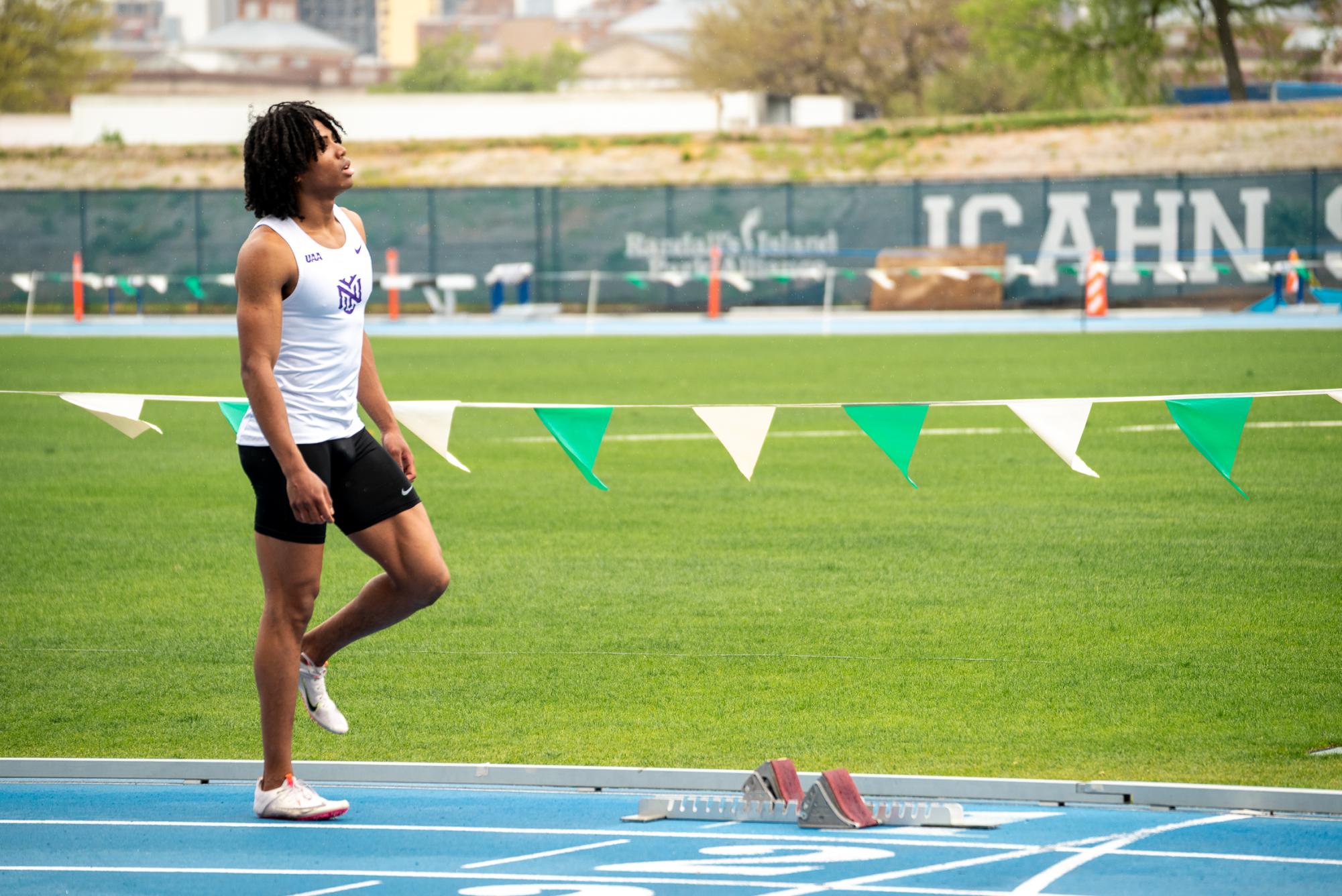
Heading into 2026, both the NYU men’s and women’s track and field teams are aiming to build upon last season’s 42nd and 62nd place finishes, respectively, at the NCAA Division III championships last year. Additionally, NYU hopes to beat the total of nine runners the teams sent to the championships in Ohio last season.
After competing in its first meet of the season at the Dec. 5th FastTrack Season Opener on Staten Island and sending four runners from the women’s team to the Sharon Colyear-Danville Season Opener on Dec. 6, the Violets officially began its season on a positive note.
According to head coach Tyler Deck Shipley, this served as an opportunity for competitors to “see where they’re at” and give runners from cross country season a proper transition indoors, as the athletes integrate into both teams and compete year-round.
“That’s the beauty of our sport,” Shipley said. “In no other sport are we together throughout the entire academic year. A huge reason why we’ve been successful is the commitment that they’ve had to the team and to each other all year round, and letting this be a really stabilizing factor in people’s lives while they’re at NYU.”
With the first meet, the team is able to gauge where they were in comparison to last year and avenge some shortcomings.
“Last year we ran into some injuries, and so some of the best people didn’t quite get there,” Shipley said. “If all goes according to plan, we can be a big step up this year.”
The team’s runners have been open about their goal to stack the field at the NCAA’s. After strong seasons last year, junior distance runner Julian Aske and senior distance runner Janie Cooper emerged as two contenders to qualify for the championships at the end of the season. In the field events, senior thrower Emma Grunin finished 14th in shot put at the UAA Indoor Championships in 2025, and senior thrower Daniel Lee placed ninth in the weighted throws, setting both up for a potential nationals bid this season.
Team culture has been a focal point for the Violets. Not just the men’s and women’s respective cultures, but the overall team culture has “always been top of mind,” according to Shipley, especially with competitors traveling to many different events on any given competition day.
“Most of us are from areas other than New York,” senior thrower Kai Aravena said. “We don’t have family coming, so having your team there to cheer you on helps a lot.”
Leaders of the team like Aravena have highlighted the need for consistency in the team’s performances and emphasized the intensity in early practices so far.
“People have been putting in work at practice,” Aravena said. “They seemed like they were excited and ready to compete, which in previous seasons it wasn’t as such.
As both the men’s and women’s teams break for the winter recess, the teams will return on Jan. 16 for the NYC Gotham Cup on Staten Island. Looking forward, each team has weekly events after the season starts, heading into the UAA Indoor Championships on Feb. 28 and Mar. 1, followed by the NCAA Indoor Championships on Mar. 13 and 14. The teams will round out the season at the UAA Outdoor Championships on Apr. 25 and 26 and NCAA Outdoor Championships on May 21, 22 and 23.
“I always say that track and field is an individual sport disguised as a team sport, because you can’t really affect how another person on your team is doing,” Aravena said. “Having a few individual performances that do stand out would absolutely be ideal, because it shows that people have been putting in the work and we were still there to support them.”
Contact Naseem Rahman at [email protected].
Sports
2025 AVCA Two-Year College All-Americans

The AVCA is pleased to announce the 2025 All-America teams for Two-Year College women’s volleyball, as chosen by the Two-Year College Volleyball All-America Selection Committee.
Forty-five players from 38 schools made the three, 15-member All-America teams for this season. The players chosen represent all sections of Two-Year College women’s volleyball: NJCAA Division I, II, and III, the 3C2A, and the NWAC.
Five schools have two 2025 All-Americans apiece: Bellevue College, Dallas College Eastfield, Feather River College, Miami Dade College, Treasure Valley Community College, and Weatherford College.
2025 AVCA Two-Year College Award Winners
Coach of the Year: Mary Frahm, Heartland Community College
Assistant Coach of the Year: Nolan McDaniel, Cleveland State Community College
Player of the Year: Chloe Albiez, Feather River College
Libero of the Year: Mana Kaneko, Odessa College
The Libero of the Year award is new for 2025. The inaugural recipient, Mana Kaneko, played in 37 matches and had 644 digs, for a 4.57 digs-per-set average. She anchored the Odessa defense, which was a major reason the team was 31-6 and placed sixth at the NJCAA Division I Women’s Volleyball Championship.
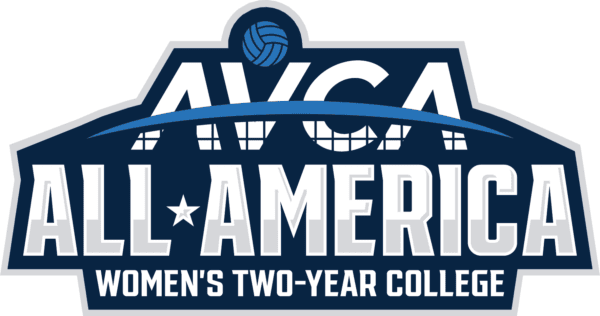
Sports
#11 Volleyball Takes on #2 Kentucky For Final Four Spot
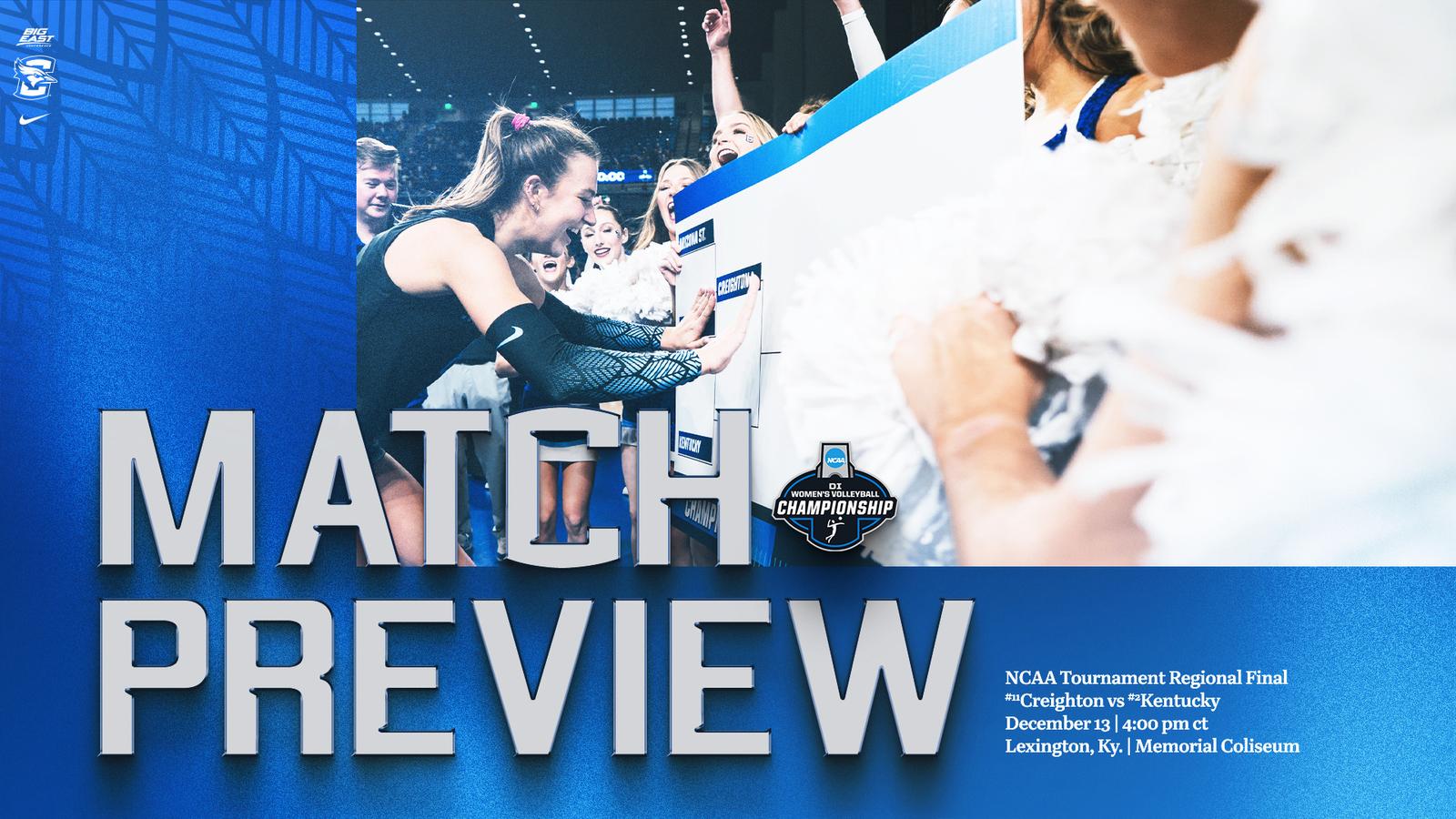
Match #34: #11 Creighton Bluejays (28-5) at #2 Kentucky Wildcats (28-2)
Lexington, Ky. • Memorial Coliseum • Saturday, Dec. 13 • 4:00 p.m. Central
| LIVE VIDEO | LIVE STATS | CU NOTES |
• Eleventh-ranked and No. 10 seed Creighton Volleyball (28-5) seeks its first trip to the Final Four when it takes on second-ranked and No. 2 seed Kentucky (28-2) on Saturday at 4 p.m. Central inside Historic Memorial Coliseum in Lexington, Ky.
• The match will be broadcast on ESPN2, with Kevin Barnett, Missy Whittemore and Dawn Davenport on the call. Live stats for the general public can be found at https://www.ncaa.com/game/6500715 and for the media via http://creighton.statbroadcast.com.
• Creighton is 5-3 all-time against Kentucky, including a 1-1 mark inside Historic Memorial Coliseum. That win came in Lexington in 2021, a 3-0 sweep over the then-No. 3 Wildcats that remains tied for the highest-ranked team that Creighton has ever beaten.
All eight previous meetings came as part of a four-team tournament involving Creighton, Kentucky, Northern Iowa and USC from 2014-22 (they didn’t play in the “2020 COVID-19 season”). The teams took turns hosting over a four-year span, then renewed the agreement for four more years.
Brian Rosen has never coached against Kentucky, while Craig Skinner is 3-5 against Creighton.
• All five of Creighton’s wins against Kentucky have come since 2015.
Only two teams in the country have beaten the Wildcats five times or more in the past 11 seasons, Nebraska (6) and Creighton (5). Next up with four victories are Pittsburgh, Purdue, Louisville and SEC rivals Florida and Texas A&M.
• Kiara Reinhardt is the lone member remaining from Creighton’s 2021 team that swept Kentucky, though Reinhardt missed the season with an injury. Associate head coach Angie Oxley Behrens, as well as tech coordinator Kaleb Scharman, were both on staff then.
From the most recent meeting in 2022, Kiara Reinhardt (4 kills, 2 blocks), Ava Martin (2 kills, 2 digs) and Sky McCune (6 digs, 2 assists) remain on the CU side.
• Creighton and Kentucky have more in common than you’d think.
– Elise Goetzinger played four seasons at Kentucky (2020-23) before transferring to Creighton for her final season last fall and becoming an All-American for the Bluejays.
– Kentucky head coach is a former assistant coach at Kentucky. One of the players he coached with the Huskers is Angie Oxley Behrens, who is in her 23rd year as a Creighton assistant coach.
– The highest-ranked team that Creighton has ever beaten is No. 3 Kentucky (3-0 in 2021 in Lexington) and No. 3 Washington (3-1 in 2017 in Seattle).
– Creighton has won 12 straight BIG EAST regular-season titles, while Kentucky has won nine consecutive SEC regular-season titles. Those are the longest two active steaks in the nation.
• Creighton has played a pair of Kentucky’s standouts in recent seasons, with great success.
Defensive specialist Molly Berezowitz spent the previous two seasons at Creighton’s BIG EAST rival, Marquette. In 17 sets over five meetings, Berezowitz accumulated 18 digs and two aces while being aced four times. Creighton won four of the five meetings.
Outside hitter Eva Hudson also played Creighton each of the previous two seasons when she played for Purdue. In seven sets, Hudson had 29 kills and 11 attack errors in 89 swings to hit 202. She also had 16 digs, one ace and one block. Creighton won six of the seven sets.
Lizzie Carr was also on those Purdue teams. She didn’t play in last year’s 3-1 Creighton win, but did have two blocks and hit -.500 (0-1-2) in CU’s 2023 sweep over the Boilermakers.
• Speaking of Eva Hudson, she was teammates with Creighton star Ava Martin this summer on USA Volleyball’s Women’s U23 roster at the Pan American Cup. The team won the gold medal, with Martin serving match point in the gold medal match.
• With a win on Saturday against Kentucky, Creighton would…
– Earn the program’s first trip to the Final Four.
– Stretch its season-high win streak to 24, its second-longest win streak in program history and take over as the nation’s second-longest active streak after snapping Kentucky’s 25-match win streak, (through Dec. 11).
– Improve to 21-14 all-time in the NCAA Tournament, including a 1-2 mark in the Regional Final.
– Improve to 6-3 all-time against Kentucky, and 2-1 in Lexington.
– Improve to 6-2 all-time inside Historic Memorial Coliseum.
– Win 29 or more matches for the seventh time, all since 2012.
– Creighton would eliminate its fourth conference tournament champ in as many matches. CU knocked out Northern Colorado (Big Sky) in the First Round, Northern Iowa (Missouri Valley) in the Second Round, Arizona State (Big 12) on Thursday and is trying to topple Kentucky (Southeastern)on Saturday.
– Creighton would improve to 1-13 all-time against teams ranked first (0-7) or second (1-6).
– Creighton would tie a school-record with its fourth Top 25 win of the fall, matching what it did in 2018, 2019 and 2024.
– Creighton would improve to 3-6 all-time in NCAA Tournament road matches with its first such win since a 3-2 victory at No. 4 Kansas in the Second Round.
– Brian Rosen can become the first person in Creighton Athletics history (all sports) to win his/her first four NCAA Tournament games as a head coach.
• Creighton’s student-athletes are approaching all sorts of milestones heading into Saturday…
– Nora Wurtz owns 58 aces, one shy of Molly Moran (59 in 2000) to set the CU single-season record.
– Ava Martin (587.0) is 8.5 points behind Jaali Winters’ (595.5 in 2015) single-season record for most points in a single-season.
– Ava Martin (69) is 10 kills shy of Jaali Winters (79 in 2015) record for most kills in a single NCAA Tournament.
– Ava Martin owns 521 kills, 25 short of Jaali Winters (546 in 2015) for the CU single-season record.
– Ava Martin (1,630) is 34 kills behind Norah Sis (1,664) for second-most in CU career history.
• Creighton is making its 15th appearance in the NCAA Tournament in the past 16 years after earning a 14th straight bid to the Big Dance. The Bluejays made their NCAA debut in 2010 and have been in every tournament since then with the exception of 2011.
The Bluejays are 20-14 in those 15 appearances, going 12-3 in First Round play, 5-7 in the Second Round, 3-2 in the Regional Semifinals and 0-2 in the Regional Finals. The Bluejays are 9-4 at home, 9-4 in neutral-site matches and 2-6 in true road matches.
Brian Rosen is in the NCAA Tournament for the first time as Creighton head coach, going 3-0 in the postseason with the Jays so far.
• Creighton is 14-5 so far this fall against NCAA Tournament teams.
In 19 matches this fall against NCAA Tournament teams, Ava Martin has averaged 4.67 kills per set and hit .320, Kiara Reinhardt averages 2.52 kills and 1.01 blocks per set while hitting .445, Annalea Maeder averaged 11.16 assists per set and Saige Damrow averaged 3.09 digs per set.
The Jays hit .272 and averaged 14.10 kills, 1.55 aces, 14.6829 digs and 2.29 blocks per set.
• Narrow it down to CU’s matches vs. Sweet 16 teams (Kansas twice, Texas, Louisville, Nebraska and Arizona St.) and the stats are more impressive. Kiara Reinhardt owns 2.79 kills per set on .500 hitting, Ava Martin owns 3.96 kills per set and Eloise Brandewie averages 1.29 blocks per set.
– The Volleyball program has joined the Men’s Soccer program (in 2002-03, 2011-12 and 2014-15) as the only programs in the history of Creighton Athletics history to make back-to-back Elite Eights.
– Brian Rosen has joined former Men’s Soccer coach Elmar Bolowich as the second head coach in the history of Creighton Athletics to take his first team to an Elite Eight, and also joined Bolowich as the second head coach in the history of Creighton Athletics to win his first three NCAA Tournament games/matches.
• Through matches of Thursday night, it’s no secret why Creighton Volleyball was still alive.
In NCAA Tournament play only, the Bluejays lead all teams with 448 attack attempts, 197 digs, 189 kills, 182 assists and 33.5 blocks.
Individually, Ava Martin is tops in kills (69) and total attempts (161), Annalea Maeder is first in assists (156), Sydney Breissinger owns a nation-leading 59 digs and Eloise Brandewie and Kiara Reinhardt are tied for second in blocks (16).
• Creighton also has three women who rank in the top 10 nationally for the entire season (through Thursday), and none of them are named Ava Martin (who does rank between 11-25 in four other categories).
Kiara Reinhardt moved from 10th to third nationally in hitting percentage (.448).
Nora Wurtz is fifth with 0.59 aces per set and ninth with 58 aces.
Annalea Maeder is eighth with 10.78 assists per set.
• Creighton is seeking its first Final Four trip in Volleyball, as it lost its only previous Regional Finals match in 2016 at Texas (3-0) and in 2024 at Penn State (3-2).
Creighton has previously been among the final four teams playing in baseball once (1991) and men’s soccer six times (1996, 2000, 2002, 2011, 2012, 2022).
• Creighton is the nation’s only school to reach the Elite Eight in women’s volleyball (2024), women’s basketball (2021), men’s basketball (2022) and men’s soccer (2022) since the start of the 2021-22 academic year.
• Of the 12 teams that remained in this year’s NCAA Tournament through matches of Thursday night, seven of them were in last year’s Elite Eight. The only exception was the 2024 national champion, Penn State.
• With a win on Saturday, Creighton will be the first school without football to reach the Volleyball Final Four since Santa Clara in 2005.
No team without football has reached the NCAA Volleyball Final since Long Beach State in 2001. The last team without football to win the volleyball title was Long Beach State in 1998.
Just as it was in 2023 and 2024, Creighton is the last team remaining in the NCAA Volleyball Tournament that does not sponsor a football program.
• Creighton is the only Volleyball program in BIG EAST history to ever reach the Elite Eight, and has now done it three times (2016, 2024 and 2025).
• Creighton enters Sunday with a nine-match win streak in true road matches, tied for the longest road win streak in team history. The only teams with longer active streaks as of Dec. 11 are Nebraska (13), San Diego (11), Stanford (11), Kentucky (10) and Ball State (10).
Kentucky enters Saturday with a 21-match home win streak, the nation’s third-longest active streak through Dec. 11 behind Nebraska (62) and Pittsburgh (50).
• Creighton improved to 33-94 all-time against ranked teams with Thursday’s 3-1 win vs. No. 8 Arizona State, including a 3-5 record this year. This is the fourth straight season of three or more Top 25 victories for the Bluejays.
Creighton also improved to 12-43 all-time against Top 10 teams with Thursday’s triumph.
• Creighton owns 10 Top 10 wins in program history, all of which have taken place in the last 11 seasons. Nine of the those Top 10 wins have taken place away from home, including wins over No. 6 Purdue and No. 10 Kansas on back-to-back days last September in Lawrence, Kan.
Creighton owns four Top-five wins in program history, and all of those were away from home.
• It’s been a busy stretch for Creighton, both on and off the court, in the past week. A couple members of the team finished final exams before departing Omaha on Tuesday, many more took a final on Wednesday, and a few will take exams on Friday.
Creighton had 16 women earn a GPA of 3.50 or better at least one semester in 2024-25 and has picked up a Team Academic Award from the AVCA each of the last 10 seasons.
• Creighton’s coaching staff is full of individuals who have been to the Final Four, and two have won national championships.
Associate head coach Angie Oxley Behrens was an undefeated national champion in 2000, and also reached the Final Four in 1998 as a student-athlete at Nebraska.
Assistant coach Adam Kessenich reached the Final Four in 2019 as a volunteer assistant with the University of Minnesota.
Assistant coach Izzy Ashburn played in four Final Fours at Wisconsin, She won a national title in 2021 with the Badgers, was a runner-up in 2019, and also made the national semifinals in 2020 and 2023.
• The University of Nebraska enters the Sweet 16 on Friday night with an unblemished 32-0 record, having dropped just seven sets all season long.
Kentucky won the first two sets against Nebraska on Aug. 31, while Creighton won sets two and four on Sept. 16.
The rest of the country won three sets against the Cornhuskers.
• Creighton had all sorts of achievements on Thursday vs. No. 8 Arizona State.
– Ava Martin’s 23 kills give her 176 in the NCAA Tournament during her career, one more than Jaali Winters (175) for the CU career record.
– Ava Martin’s 23 kills were the most by a Creighton player in any four-set NCAA Tournament match.
– Annalea Maeder’s 56 assists were the most by a Creighton player in any four-set NCAA Tournament match.
– Annalea Maeder surpassed 4,000 career assists. She’s at 4,002 entering Saturday.
– Setter Annalea Maeder had her third straight double-double, tying outside hitter Jaali Winters (in 2016) for the CU record for NCAA Tournament double-doubles in one year. Maeder owns 15 double-doubles this fall and 37 in her career.
– Creighton seniors Ava Martin (23-4-49), Kiara Reinhardt (15-1-19) and Annalea Maeder (2-0-4) combined for 40 kills in 72 swings with just five errors, good for a .486 hitting percentage.
– Creighton hit .600 in the third set vs. Arizona State, its best hitting percentage in an NCAA Tournament set in program history.
– Creighton hit .370 on Thursday, its highest hitting percentage in a four-set match in an NCAA Tournament contest in program history.
– Jaya Johnson closed out Creighton’s third set win with her seventh ace of the season, and first since Oct. 17 vs. St. John’s. Johnson had served just 16 times total over CU’s previous 11 matches before serving six times on Thursday vs. Arizona State.
• Jaya Johnson has had 10 or more kills in each of Creighton’s last four matches, including 12 kills vs. Arizona State on Thursday.
Johnson now owns 52 kills in her past five NCAA Tournament matches, hitting .298 in that time.
Johnson remains the only player in the BIG EAST averaging at least 0.80 digs and 0.80 blocks per set this season.
• Sydney Breissinger had her 11th straight match with 10 or more digs on Thursday vs. Arizona State as she tied her career-high with 20. Breissinger owns 20 (Northern Colorado), 19 (Northern Iowa) and 20 (Arizona State) digs in three NCAA Tourney contests this fall. Those 59 digs put her tied for second-most in CU history for a single NCAA Tournament, 20 shy of Brittany Witt’s 79 in 2016 and are the most in the country in the 2025 NCAA Tournament through Thursday.
Creighton is now 33-2 all-time in matches when Breissinger plays libero at any point in a match (12-1 in 2023, 21-2 this year), winning 105-of-118 sets.
• Kiara Reinhardt had 15 kills in 19 swings on Thursday vs. Arizona State, hitting .737 and delivering the kill on match point.
Reinhardt is now hitting .544 in this year’s NCAA Tournament (35-4-57), upping her season hitting percentage to .448 which ranks third nationally through matches of Dec. 11.
Reinhardt has hit .500 or better in 16-of-33 matches this season.
• Creighton won the first set of Thursday’s match vs. Arizona State by a 26-24 count.
Each of Creighton’s last 26 matches (and 31-of-33 overall this year) have been won by the team to win the first set.
Creighton is 15-4 in NCAA Tournament play when winning the first set all-time.
• Creighton played the nation’s toughest non-conference schedule this fall, resulting in a 7-5 start that had some worried. Each of the last three times that Creighton Volleyball has lost at least five of its first 12 matches, the Bluejays have rebounded quite nicely.
Creighton’s 2015 team finished non-conference play with a 5-7 record, then won 22 of its next 23 matches to qualify for the program’s first Sweet 16.
In 2016 Creighton ended non-conference play with a 6-6 mark, then won 23 straight matches to reach the program’s first Elite Eight.
This year’s team started 5-5 and has won 23 matches in a row to reach the Elite Eight once again.
• There’s nothing mid-major about the Creighton Volleyball program.
Since 2012, Creighton ranks fourth nationally with 372 victories. Entering Friday’s NCAA Tournament action, the only teams with more wins in those 14 seasons were Western Kentucky (400), Kentucky (393 and Penn State (375). Just behind CU is Stanford (368) and Texas (368).
In that time, Creighton has made five Sweet 16’s and three Elite Eights while leading the country with both 13 regular-season conference titles and 12 league tournament titles,
• Creighton has had five players in program history earn All-Regional status in the NCAA Tournament, but Ava Martin has a chance to become the first two-time honoree.
CU’s previous All-Regional players include Jaali Winters (2016), Marysa Wilkinson (2016), Kendra Wait (2023), Norah Sis (2024) and Ava Martin (2024).
• Creighton has three women on the 2025 roster from the Kansas City area, who are looking for a return home for next week’s Final Four.
Both Jaya Johnson and Ava TeStrake are from the suburb of Olathe, while Ava Martin is from Overland Park. Martin attended the 2017 Final Four the last time it was hosted in Kansas City.
Kansas City is just under three hours from Omaha if you go South on I-29.
Sports
John Jay’s Jadyn Orava Named To All-ECAC Women’s Volleyball First Team
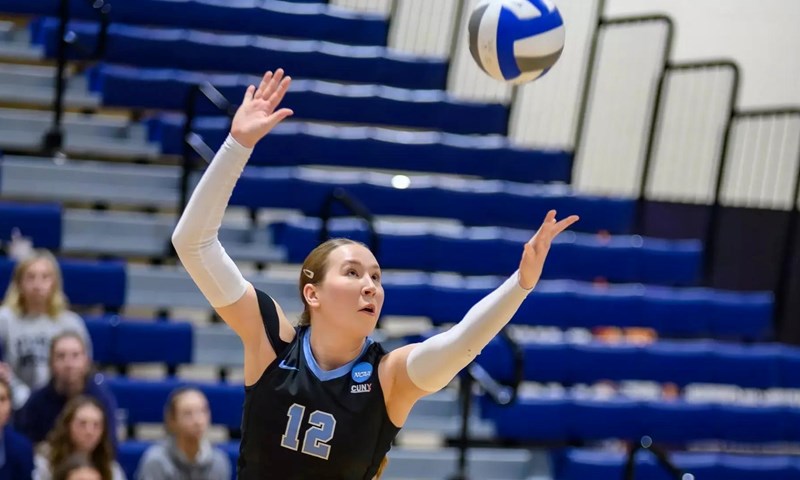
Release Courtesy John Jay Athletic Communications
Danbury, Conn. – The Eastern College Athletic Conference (ECAC) has announced its 2025 Division III women’s volleyball All-ECAC Teams and major award winners.
2025 CUNYAC women’s volleyball Player of the Year, Jadyn Orava, was one of 14 players to be named to the All-ECAC Team as the Gilbert, AZ native earned First Team honors. Orava was the lone member from the conference to be recognized.
Kean University had two award winners: Ashley Torok won Rookie of the Year, and head coach Don Perkins won Coach of the Year. Gwen Eustace of Salisbury University was named Offensive Player of the Year, while Bella Demers from William Paterson was tabbed Defensive Player of the Year.
Orava had a stellar season for the Bloodhounds, who clinched the program’s second straight CUNYAC title and first-ever outright regular season championship with a perfect 7-0 conference record. The sophomore outside hitter registered 496 kills, 14 assists, 58 aces, 245 digs, three solo blocks, 19 assisted blocks, and racked up 566.5 total points.
She became the Bloodhounds’ third straight Player of the Year recipient, joining former Bloodhound Josanne Lewis, who earned the honors in 2023 and 2024. Orava collected a league-high eight Player of the Week selections while garnering national attention, earning two AVCA National Division III Player of the Week awards.
Orava was named Most Valuable Player of the CUNYAC championship match after leading the Bloodhounds with a double-double, registering 25 kills and 21 digs while adding two aces.
She finished second in all of Division III in kills per set (5.06) and points per set (5.78) while ranking eighth overall in total kills, tenth in attacks per set (11.79), and tenth in total points (566.5).
For the latest news on the CUNY Athletic Conference, log on to cunyathletics.com – the official site of the CUNY Athletic Conference. Also, become a follower of the CUNYAC on Instagram (@CUNYAC), Twitter (@CUNYAC) and YouTube (@CUNY Athletic Conference), and “LIKE” Us on Facebook (CUNY Athletic Conference).
Sign up to receive the latest CUNY Athletic Conference news delivered right to your email inbox HERE.
Sports
Lizzie Carr’s 11 Kills Push Kentucky into Elite Eight Saturday – UK Athletics
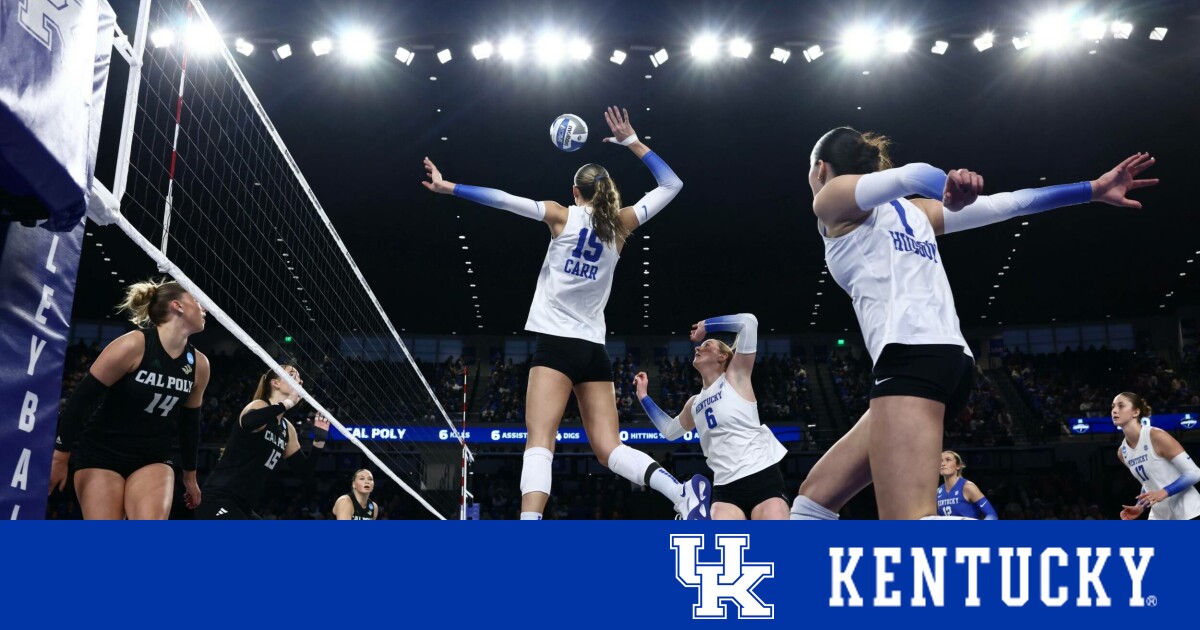
LEXINGTON, Ky. – Thanks to a .419 hitting efficiency as a team and 11 kills from junior middle blocker Lizzie Carr, the Kentucky Volleyball team swept Cal Poly 3-0 (25-18, 25-19, 25-7) on Thursday afternoon inside Historic Memorial Coliseum to advance into Saturday’s Lexington Regional Final in Lexington.
Kentucky will now play Creighton on Saturday in the 2025 Lexington Regional Final for a spot in the Final Four. The match time has been conformed for 5 p.m. ET. The match will be televised by ESPN2. Tickets can be purchased at UKathletics.com/tickets. Creighton beat second-seeded Arizona State 3-1 on Thursday in the opening match of the regional.
UK had seven players who had multiple kills in the match Thursday as the Carr led the way with 11 and Eva Hudson having nine in the match without an error on 24 swings for a .375 hitting percentage. Brooklyn DeLeye had eight kills Thursday night with eight digs, as well as the Kentucky offense was firing on all cylinders during the match.
UK’s defense was the main story Thursday as the Wildcats held Cal Poly to a .114 hitting percentage for the afternoon, including a -.083 mark for the third set alone. Cal Poly was forced into 19 hitting errors during the match and Kentucky had nine stuff blocks as a team, including four in the third set alone as UK cruised to a 25-7 third-set sealing mark.
Kennedy Washington was errorless Thursday afternoon with seven kills on 10 swings to hit .700 and she also threw in three blocks as Carr’s six blocks led the way for UK’s defense. Between Carr and Washington, they combined for 18 kills and only one error in the match along with nine blocks in what ended up determining the difference in the outcome.
Kassie O’Brien ran the Kentucky offense to a .419 hitting percentage with 31 assists in the match. Molly Tuozzo had nine digs to lead the Wildcats in the floor defense category and Tuozzo also added in five assists to her stat line, as well.
Set 1
Kentucky hit .464 in the first set and took the opener, 25-18 over the Mustangs to grab a 1-0 lead in the match. UK jumped out to the quick 4-1 lead on two kills each by Lizzie Carr and Brooklyn DeLeye to put the Mustangs under immediate pressure. Cal Poly pushed back and pulled to within one at 4-3 but Kentucky then raced out to another three-point lead at 9-6 and never looked back. The Wildcats took a 15-12 lead into the media break following a Mustang blocking error and then after UK won two of the next three points out of the media timeout, they called one of their own, their first, at 17-13. A stuff by Kennedy Washington pushed Kentucky in front 21-17 and Cal Poly burned its final timeout. Kentucky arrived at set point leading 24-18 and an ace from Trinity Ward sealed the first set as UK won it, 25-18. Lizzie Carr had a team-best five kills in the first set, on five swings to hit 1.000 as Kentucky hit .464 as a team. Kassie O’Brien had 10 assists on 15 of UK’s kills with Kentucky logging 15 kills to two errors in the frame. UK never trailed in the first set.
Set 2
UK held Cal Poly to .079 hitting in the second set and claimed a 2-0 lead in the match with a 25-19 second-set victory. The Wildcats hit .257 for the frame and had 17 digs en route to taking the set. Kentucky trailed early at 5-2 but a 5-0 Trinity Ward serving run pushed Kentucky in front for the first time all set and the lead grew to multiple points on a kill from Eva Hudson on the left side to make things 7-5. Kentucky’s lead became four at 11-7 and at the media timeout, an extended-rally kill by Lizzie Carr pushed UK to 15-12 at the break. Cal Poly used its first timeout when it trailed 9-4 and then a pipe by Brooklyn DeLeye made things 20-14 as UK took the six-point lead for the first time all day. Cal Poly burned its final halt to play at 22-16 and a service ace ended the second set, just as it did the first, as Molly Tuozzo pushed across her first ace of the day to close the book on the second set with a 25-19 frame. Kentucky had 14 kills in the set and Kassie O’Brien had 21 assists through the opening two sets of play.
Set 3
Kentucky ran away and hid in the third set, jumping out to a 13-3 lead thanks to a huge serving run by Trinity Ward, whose serve caused problems for the Mustangs all afternoon long. Ward exited the run with Kentucky ahead by 10 and the Wildcats quickly grew the lead to 12 at 16-4, the largest lead for the Wildcats in any set this tournament. The lead grew to 25-7 late in the set as a kill by Kennedy Washington put the match away with her seventh kill of the night. UK hit .609 for the third set with 14 kills and zero errors with 12 assists for O’Brien.
For the latest on UK Volleyball, follow the Wildcats on Twitter and Instagram at @KentuckyVB.
Kentucky Postgame Quotes
Kentucky Head Coach Craig Skinner
Opening Statement…
“I told Caroline at the end of the match, that the last set was no indication of her team. They had a heck of a year, and one of the things that was really important for us in this match was to apply a lot of serving pressure so their lightning-fast offense couldn’t get going, which it did in the first set. I think the pressure was really good, and the offensive connection between Kassie and Lizzie and Kennedy in our middles really helped spread the offense so that we were multi-dimensional, which I think caused problems. I’m really pleased with our focus in the first set to be able to give us some separation when we needed to.”
On the game plan to go to the middle…
“I think a little bit of both. I think it was important, you know, Kyle talked to the starts about the game plan before the match, and definitely establishing the middle is important in any match. As it continued to go very well, there’s no reason to go away from it. You know, so we’re continuing to score, got to keep going. Cassie did a really good job of finding them, both in serve, receive and transition.”
On Cassie’s performance as a freshman…
“I mean, her demeanor has been the same since January, and we’re in December now. Her demeanor at practice games, matches, SEC championship match, first match of a weekend, it’s always the same. So, I credit her for her toughness to weather pretty much anything that’s thrown in her direction. Very proud as a coach to see the way she handles things.”
Kentucky Student-Athletes
#15 Lizzie Car, MB
On Lizzie being the go-to hitter this game…
“We know that a lot of teams are going to draw a lot of attention to Brooklyn and Eva and so we have to find a way to score from another part of the court and tonight, Kassie was able to put me and Kennedy in really good positions, and then we would score from the back side as well. We were just able to score from other avenues at the court, which is going to be really important going forward.”
On message for her teammates…
“I was just talking about given props to Trinity. She had an amazing few star runs throughout the game, and we would not have been able to see what we did without her putting so much pressure on them from behind the line and that I talked about how we were going to need to we knew going into this match, we were going to need to have really good defense, not just blocking, but digging the ball as well. I also talked about how going into tomorrow or Saturday and the next game, we’re going to need to be able to bring that again because there’s going to be a lot of great hitters and so we’re going to need to use our block and our backcourt to defend them.”
On the fans …
“I just think that we obviously got the second got to host the second and third round, and so it’s really cool to be able to have BBN show out and make it feel like a real home court advantage because without them, there wouldn’t really be a huge difference in it being here or someone else besides some of the like routine stuff getting ready for pregame and so the whole entire crowd being blue and being so loud is just what’s such a big benefit for us. “
#6 Kassie O’Brien, S
On connection with the middles…
“I think each day in practice, it’s something that we want to work on, and it just continues to grow. And so tonight, I don’t know, we’re just kind of feeling it, and our passing did a great job to put us in a good position in order for you to do it to Lizzie and then to Kennedy, too.
But I think being able to balance the difference between the two hitters has been a challenge, but, you know, they do a great job of communicating with me and we connect really well, and so just finding that connection has been really big.”
On what she saw on the court…
“I think spreading out the offense is such an important piece of the game and going into this match we knew that so many other hiters were going to have a lot of success and then also opening or setting the middles in the rights are just going to open up them even more. Just finding that throughout the game has just been something that we’ve continued to work on and it was very good tonight.”
On the fans …
“I think it’s super cool. I feel like even in that third set, it was we kind of talked about it, it was like, kind of the loudest that we’ve heard it and it just being a Thursday at 3:30, you wouldn’t really expect that, but it just shows how much, you know, BBN really shows out for us and is there.”
#7 Eva Hudson
On Lizzie’s game…
“Well, personally, I’ve been with her for a very long time, so it’s like a proud mom moment, and I love watching her swing away with confidence and she’s such a great player. So I’m glad she is reaping the amazing success. But as if for a team, she brings so much energy to the team in the first place, and then when she’s scoring relentlessly that is so fun and then it makes me in Brooklyn’s job so much easier.”
On the fans …
“It’s just absolutely amazing. Some people were like, do you think we’ll get a crowd? And our whole team was like, ‘Nah, like, we’ll have a crowd cause they show up every single time.’ And it’s so funny cause we don’t even know what Craig’s up to and then we see the post and he’s in a plane, so we’re about in the dark, as you all. It’s absolutely amazing being able to play in front of them and then being able to play in front of them on Saturdays,
Cal Poly Postgame Quotes
Cal Poly Head Coach Caroline Walters
Opening Statement …
“All good things come to an end I guess. And my seniors here, the three of them, we have overwhelming gratitude for this journey. Kentucky is an amazing volleyball team, and I was telling my assistant, you know, on film, and we get a ton of numbers, and we watch so much film, the hardest thing to assess is serving from film. And I thought they served the toughest serving match of any team we played this year. So, you know, forced us to get off the net. And from there, it’s tough to kill balls against them, because they are so big as blockers and play tremendous defense. So hats off to them. I told Craig to win it, and then we can tell people we finished second. No, I again, just, just this has been an amazing, amazing time for us, these past few weeks of whirlwind and gratitude to represent Cal Poly on national stage. You know, we’re hearing from people all over the country, and it’s just been incredible to represent not only our great university, but mid majors in general, and to be here in a sweet 16 competing against an amazing university and a beautiful facility. Yeah, we’re just thankful for that. I personally am thankful to be one of three female head coaches of a sweet 16 team, I think it’s really important to be visible, not only as a female but a mother. It’s something that, you know, I want to model for these guys, and I hope that a few my players over the years will want to stay in coaching, because they see the way I’m able to balance my personal and professional life. And Emmie, when she first came her freshman year. She I mentioned this the other day. She was a kids coach. She grew up in her dad’s, her dad’s program, Division Three, football, Whitewater, Wisconsin. And as she came, one of her first things she said to me is, I’m never going to be a coach. Like, I hate that life for kids, blah, blah. And I’m like, I didn’t have kids then, and then I had kids. And I’m like, okay, and over the years, I think that one of the coolest things is, like, Emmie’s plan when she goes back is she wants to be a coach and like, this is incredible. Making a sweet 16 is great. But to influence my athletes, like, want to be in this profession and be able to do it while being a mother, that’s going to sit on my heart for a while.”
On Kentucky going to the middle so much …
“Yeah, you know, scouting wise, you look at the numbers, and they’re receiving, you know, a bulk of that, and they were able to find their middles, you know, I thought we served well at times. I think that they, they just settled in service, you passing, and were able to stay in system. And, yeah, they said, especially the slide, right, like that wasn’t something that was being said at a high percentage. So they ran the middle really efficiently and effectively. And we spent a lot of time preparing our blockers for the balls going that way. If it’s not going that way, be ready for the one out of the middle, like we have to be able to slow that down. And I thought that Craig did an incredible job of finding not only the middles. I thought they said the opposite effectively as well any of the athletes want to address that.”
Cal Poly Student-Athletes
#4 London Haberfield, L/DS
On making it to the Sweet 16 …
“Yeah, I just think us seniors will hold on to this forever. We’re just so happy that we could put Cal Poly on the map. As a senior, and leaving that legacy behind, that’s something that you dream about. So just riding that high, I’m going to ride it for the rest of my life. Yeah, just the past few weeks, just being in the tournament, it’s just, it’s so amazing. I’m just so grateful for every single one of these people.”
On the challenges of Kentucky’s serving….
“Oh, yeah, they just, they pushed face and then they would catch you off guard with their drops and just clogging the routes for the middles and stuff. They were just so effective in the way that they chose who to serve and where to serve and specific pace on all. It’s something that it’s tough to practice, especially in a gym that’s filled with so many fans. Yeah, I’m just grateful that we could experience that and for them to go back into the gym and turn up that volume on that serve.”
On Cal Poly fans support…..
“Thank you. From the bottom of my heart, it’s been an incredible five years. And just the support is a lot – it’s so present and it’s just so felt by all of us on the court, off the court, seeing those stands packed, seeing the band there. I just couldn’t ask for a better environment to play”
#20 Annabelle Thalken, OH
On making it to the Sweet 16 …
“Yeah, I think trust was a huge work for us this entire time. We talked about having trust in each other, trust in our scout, trust in our ability, going into the big West tournament, and then after that, we just had continued with that. We kept our trust with each other and just believed that we could do something special. And we very clearly did.”
#14 Emmie Bullis, S
On making it to the Sweet 16 …
“Yeah, when I first opened my phone after we had won to go to the Sweet 16 and my brothers both texted me and said, we gotta get those pictures framed. I just think it’s something that will forever be with us. But it’s all of our hard work, but also our teammates hard work and the people that are behind the scenes that got us here. I mean, we’ve been playing volleyball since we were 11 and it’s our senior year, it’s lined up perfectly and we’re gonna go out on such a high. I’m just thankful to be around these people and be able to hold these memories in a frame somewhere in my house someday.”
On a moment of adversity that urged you to battle back….
“I mean, I think our low for the season was getting swept by Irvine in our last home match in Big West. And we all were, we could feel that. Like there were a few losses we had in conference that we could just visibly see our team taking heart. I took it to heart so much, but Caroline has said this before, if it wasn’t for that, I don’t think we would be here where we are right now because those losses have made us who we are. So if it wasn’t for those, if it wasn’t for the people challenging us in our conference, we wouldn’t be where we are today.”
-

 Rec Sports3 weeks ago
Rec Sports3 weeks agoFirst Tee Winter Registration is open
-

 Rec Sports2 weeks ago
Rec Sports2 weeks agoFargo girl, 13, dies after collapsing during school basketball game – Grand Forks Herald
-

 Motorsports2 weeks ago
Motorsports2 weeks agoCPG Brands Like Allegra Are Betting on F1 for the First Time
-

 Motorsports3 weeks ago
Motorsports3 weeks agoF1 Las Vegas: Verstappen win, Norris and Piastri DQ tighten 2025 title fight
-
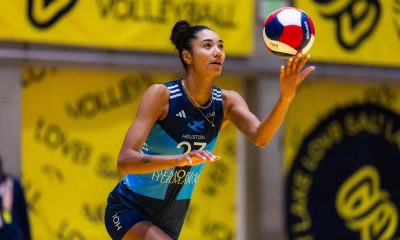
 Sports2 weeks ago
Sports2 weeks agoTwo Pro Volleyball Leagues Serve Up Plans for Minnesota Teams
-

 Sports2 weeks ago
Sports2 weeks agoUtah State Announces 2025-26 Indoor Track & Field Schedule
-
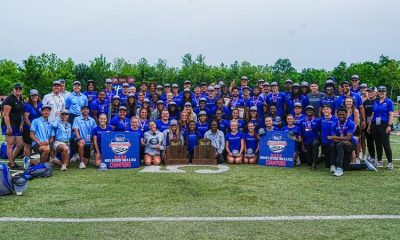
 Sports2 weeks ago
Sports2 weeks agoSycamores unveil 2026 track and field schedule
-

 Motorsports2 weeks ago
Motorsports2 weeks agoRedemption Means First Pro Stock World Championship for Dallas Glenn
-

 Motorsports2 weeks ago
Motorsports2 weeks agoJo Shimoda Undergoes Back Surgery
-

 Sports2 weeks ago
Sports2 weeks agoTexas volleyball vs Kentucky game score: Live SEC tournament updates



























